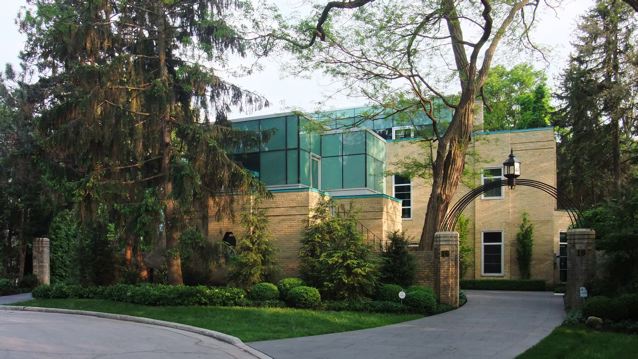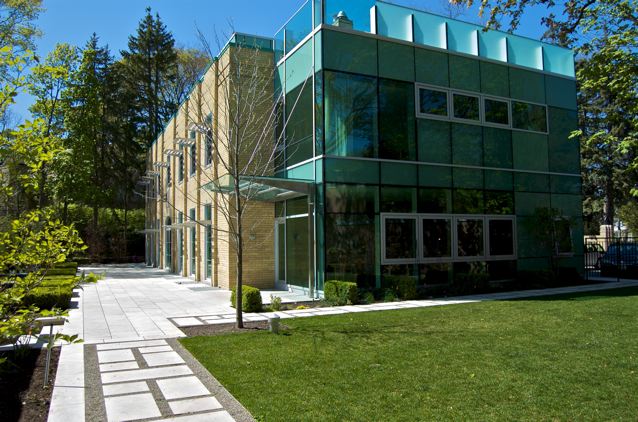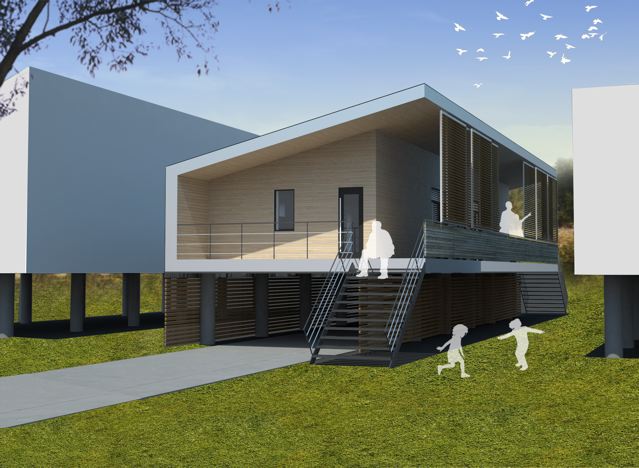
Making it look Easy in Toronto and New Orleans
The three-step Dowsett design system
One: Start with conservation to reduce the energy demand of a building. Two: rely on passive sources of energy, supplied freely by nature. Three: consider active technologies to provide the balance of the renewable energy required. It’s as easy as 1-2-3.
At least that’s how Paul Dowsett, Principal Architect at SUSTAINABLE.TO, explains it. He is one of those larger-than-life Torontonians who works hard at making things look easy. Last month he was honoured under the CMHC Healthy Housing Recognition Program; in September he was nominated for a Heritage Toronto Award and last May he won the coveted first prize in the international competition to design a Passive House for New Orleans. Dowsett has been in the green building business for about 25 years; and we all know it’s not actually easy.
Sustainable technologies can have 40 or 50 years of performance under their belts and still be obsessively scrutinized for payback and described by the unenlightened as ‘unproven’ or ‘new.’ Renewable energy generation, the world’s fastest growing business and currently the most popular investment opportunity, is routinely described by myopic politicians as damaging to the economy even as they subsidize economic fossils like fossil fuels. In Canada it would be generous to describe progress on green building regulations as a bit like a roller coaster.
ENTHUSIASM
Meanwhile Paul Dowsett and many others persevere and even flourish, because they believe strongly in what they are doing. Standing in front of his project in Willowdale, Ontario with CMHC officials and the obligatory framed certificate, Dowsett seems restless to complete the photo-op. Moments before he was full of life, enthusiastically leading the assembled journalists and industry representatives through the building, pointing out each thoughtfully planned feature that conserves energy and optimizes efficiency.

In 2010 he completed the restoration, renovation and additions to David and Kate Daniels’ 1935 “eco-deco” (Art deco) mansion in Toronto’s South Hill neighbourhood.
Mechanical systems were replaced with a geothermal radiant heating and cooling system that employs highly efficient zoned heat pumps, reducing reliance on fossil fuels in winter and the municipal power grid in the summer. Says Dowsett: “There is enough thermal mass under a single house to heat a city block and geothermal offers an energy co-efficient of 3.9:1, compared to 1:1 for electric heat.” In other words it is about 4 times more energy efficient.

A solar thermal panel system was added for radiant heating and domestic hot water pre-heating. The building is also solar-photovoltaic-ready, which means PV panels can be easily added in the future to reduce reliance on the municipal power grid.
High albedo white roof reflects sunlight, minimizing solar gain and reducing cooling load.
Solar shades on the south facing windows reduce summer solar gain. Interior reflective light shelves increase natural daylight penetration in winter.
Existing windows were replaced with high efficiency, Low-E, argon filled, double pane, non-glare windows. Windows for the addition were bigger and even more efficient, triple pane and made from vision and translucent glass to increase natural daylight penetration.
Existing brick, wood studs, joists and flooring were re-used, reducing landfill waste and project manufacture and transport energy. The existing plumbing and light fixtures were salvaged by Habitat for Humanity. Some of the original steel frame windows were salvaged for re-use in the interior of the building

A rainwater system will collect rainwater from the roof and terraces into underground cisterns for landscape irrigation, reducing stormwater runoff and demand on the municipal water supply. A green roof is designed, again to reduce runoff as well as cooling loads. On the roof and surrounding the house, native vegetation was planted which relies mostly on rainwater and does not require the use of pesticides or chemical fertilizers.
Energy efficient interior and exterior lighting includes LED, metal-halide, xenon and compact fluorescent. Kitchen and laundry appliances are Energy Star rated.
Plywood sub-floor material is urea-formaldehyde-free and Forest Stewardship Council certified. Stone terrace slabs from a local Ontario source reduce transportation energy. Other materials sourced within 800 kilometres of the project include fly ash and slag in cement and concrete, industrial waste wood chips in block foundations, mineral wool insulation made from industrial waste slag, waste sugarcane-based spray foam insulation, 33% recycled drywall and new floors made of upcycled crushed walnut shells, a commercial waste by-product, cast in water-based epoxy resin.
BRAD PITT DIDN’T WIN
Similar features and philosophies have been incorporated into many other Dowsett buildings along with wind power, straw bale walls, rainwater re-use, and community features.

His competition-winning Passive House design for New Orleans was also airtight, thermal-bridge free and super-insulated, with passive shading in the summer and solar heat gains in winter. He included a concrete floor topping for thermal mass to radiate the heat into the space, the corrugated galvalume wall and roof cladding; and a balanced energy recovery ventilation system and split-zoned high-efficiency heating and cooling units with an ultra high-efficiency on-demand water heater and supplemental radiant floor heating. As per the post-Katrina building codes the house is raised 7 feet above grade, securing its safety during flooding and providing shaded parking, storage, and outdoor living spaces.
Brad Pitt and his team are also designing and building houses in New Orleans, but Dowsett thinks they might not be quite as affordable, nor as sustainable in the long-term. “They might be focusing on sexy new high-tech energy systems, rather than on what can be done with conservation and passive principles.”
In other words if you want it to be as easy as 1-2-3; start with 1 and 2. GB